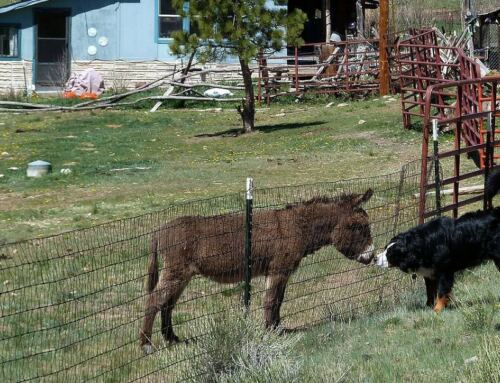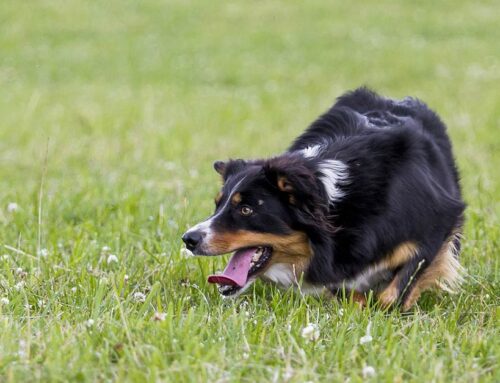 In the same way that fast food has provided us with the opportunity to over consume sugars, fats and chemical additives that may be contributing to, if not outright causing, many of the diseases prevalent in the western world, the “balanced” field of dog training has provided us with the opportunities and excuses to be cruel to our dogs, the implications of which are ignored or denied. That a collar not only designed to “choke” with no effort made to disguise its purpose by calling it something else, or that a prong collar, with it’s medieval look is even purchased by someone lacking a fetish for such devices, are examples of how we have become inured to the actual pain we cause or distress we create in our dogs. Euphemistically called a pinch collar–pinching being what we do to chubby babies so how bad can it be–in plastic or metal it is designed to inflict pain.
In the same way that fast food has provided us with the opportunity to over consume sugars, fats and chemical additives that may be contributing to, if not outright causing, many of the diseases prevalent in the western world, the “balanced” field of dog training has provided us with the opportunities and excuses to be cruel to our dogs, the implications of which are ignored or denied. That a collar not only designed to “choke” with no effort made to disguise its purpose by calling it something else, or that a prong collar, with it’s medieval look is even purchased by someone lacking a fetish for such devices, are examples of how we have become inured to the actual pain we cause or distress we create in our dogs. Euphemistically called a pinch collar–pinching being what we do to chubby babies so how bad can it be–in plastic or metal it is designed to inflict pain.
Pet owners are responsible for their dogs, and in the same way a parent is responsible for feeding their children, need to be accountable for the choices they make in how they train their dogs. As with the consequences of bad diets and its impact on health, someone else is often burdened with paying the price when this does not occur. Our health care system becomes swamped with people suffering from lifestyle diseases, illnesses that would likely not have occurred if the person had not consumed too much fat and sugar in their lifetime. Shelters and rescue groups are overwhelmed by the number of homeless dogs, many healthy and behaviorally sound, but many others who are not. Yet even the sound are often subjected to the cruelties of shock, choke and prong for infractions such as barking at things, for not having been sufficiently motivated to come when called, for growling at people or animals they feel threatened by, for choosing the wrong surface to sleep on, for taking a step off their owner’s property, and the list goes on.
In some cases pet owners might only be faulted for being uneducated and unwitting consumers. The manufacturers of dog training equipment built to “work” because they are aversive to dogs rarely state this fact up front and honestly. The word humane in their packaging and marketing literature is seen as often as the word natural is in the grocery store. Trainers who advocate the use of these devices, even when they themselves use them in ways that are as minimally aversive as is possible, contribute to the ease with which owners of a new dog will leave the pet shop with a shock collar more often than a treat pouch. Our inability to see the progression of behavior problems and their relationship to the use of aversives means that it is the dog who bears the burden of responsibility for behavior change, not the human driving it.
Breeders and rescue groups placing dogs genetically predisposed to: being wary of strangers, sensitive to movement, inclined to bark, follow their nose unrelentingly, kill small animals, etc., are not freed from their responsibility in the puzzle of fitting dogs into pet homes. As either actual experts in dog behavior, or because they have set themselves up as such, they are responsible for making sure square pegs are not going to be battered (choked, pinched, shocked) into round holes. The challenge of addressing animal abuse takes a concerted effort on the part of all of us who care. We can start by stopping the legitimization of inflicting pain and minimizing the actuality of that pain. Or at least we should be straight about the fact we are doing it.
Yes we eat too much sugar and fat because it tastes good, makes us feel good (while we’re eating it anyway), and provides us with some nutritional value. And yes, we find it hard to stop doing it, and though the risks of heart disease and diabetes are increased by our habits, we still find it difficult to change them. We will deal with the consequences of our behavior down the road.
Yes we use pain (both physical and emotional) and threat of it to train our dogs. It often provides us with a quick end to problem behaviors and we don’t know how else to do it. That there may be consequences to our use of pain and coercion to train, we often don’t make that association and use pain to address those additional problems as well. Our dogs will deal with the consequences of our behavior down the road and our training habits may contribute to the shortening of their lives.
Before you put a device or your hands on a dog to correct their behavior, stop and think. As trainers are reminded over and over again by the expert trainer and educator Bob Bailey, “You are bigger and you are smarter.” It’s time we started acting like it.





